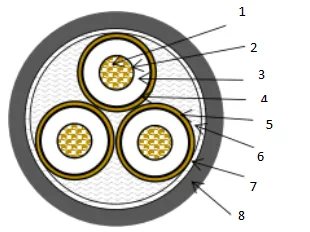9 月 . 07, 2024 19:46 Back to list
Types of Electric Cable Wire
Understanding the Different Types of Electric Cables
Electric cables are a vital component in modern electrical systems, serving as conduits for the flow of electricity. With various applications ranging from residential wiring to industrial setups, the types of electric cables available today are numerous. Understanding these different types can help in making informed decisions when deciding which cable to use for a specific purpose.
1. Conductor Types At the most basic level, electric cables consist of conductors, which can be either copper or aluminum. Copper is known for its excellent conductivity and flexibility, making it a popular choice for most applications. Aluminum, while it has lower conductivity than copper, is lighter and generally less expensive, which is why it’s often used in overhead power lines and larger installations.
2. Insulation Types Electric cables are also defined by their insulation, which protects the conductors from environmental factors and electrical hazards. Common insulation materials include PVC (Polyvinyl Chloride), XLPE (Cross-Linked Polyethylene), and rubber. PVC is widely used due to its durability and resistance to chemicals. XLPE, on the other hand, can handle higher temperatures and is ideal for more demanding applications. Rubber insulation is often found in flexible cables, used in power tools and appliances.
3. Cable Categories There are several categories of electric cables based on their applications
- Power Cables These are designed to transmit and distribute electrical power. They can be used in residential, commercial, and industrial applications. Power cables typically come in several sizes and are insulated to handle higher voltage levels.
types of electric cable wire

- Control Cables Used to control and monitor automation systems, control cables connect various machines and equipment. These cables have multiple conductors, allowing for simultaneous control of multiple devices.
- Communication Cables These cables are used for transmitting data and include Ethernet cables, telephone cables, and coaxial cables. They are designed with specific characteristics to minimize interference and ensure high data transfer rates.
- Flexible Cables Flexible cables are designed for applications that require a degree of movement. Often used in portable devices and machinery, these cables are built with multiple strands of wire, allowing for bending and twisting without damage.
4. Specialty Cables Additionally, there are specialty cables designed for specific environments or uses. For example, armoured cables have an additional protective layer to prevent damage from external threats, making them suitable for underground or outdoor installations. Similarly, fire-resistant cables are designed to maintain circuit integrity in extreme heat scenarios, making them ideal for critical safety systems.
Conclusion In conclusion, understanding the various types of electric cables is crucial for anyone involved in electrical work or construction. Choosing the right type of cable based on its characteristics and intended use can ensure safety, efficiency, and reliability. Whether you’re wiring a new home, upgrading your office, or setting up industrial machinery, the right electric cable makes all the difference in achieving optimal performance and safety in your electrical systems.
Share
-
Understanding the Differences Between Wafer Type Butterfly Valve and Lugged Butterfly ValveNewsOct.25,2024
-
The Efficiency of Wafer Type Butterfly Valve and Lugged Butterfly ValveNewsOct.25,2024
-
The Ultimate Guide to Industrial Swing Check Valve: Performance, Installation, and MaintenanceNewsOct.25,2024
-
Superior Performance with Industrial Swing Check Valve: The Essential Valve for Any SystemNewsOct.25,2024
-
Industrial Swing Check Valve: The Ideal Solution for Flow ControlNewsOct.25,2024
-
You Need to Know About Industrial Swing Check Valve: Functionality, Scope, and PerformanceNewsOct.25,2024